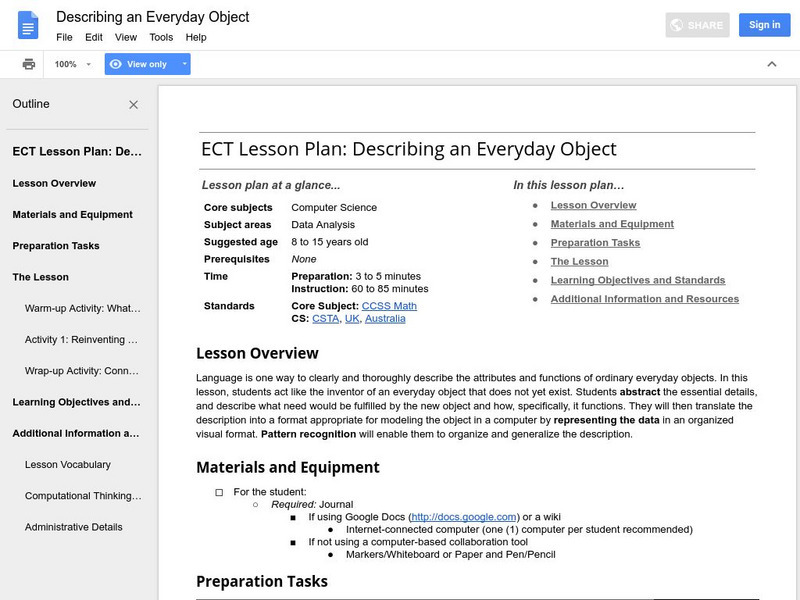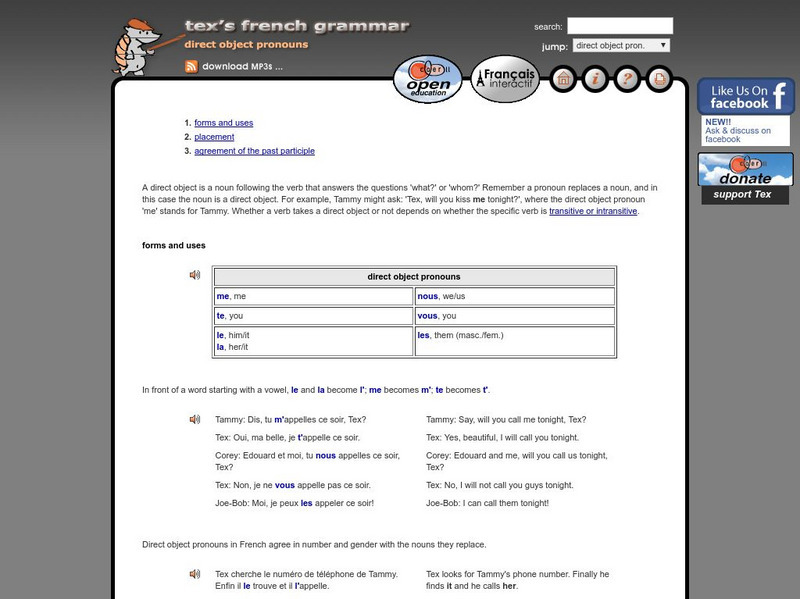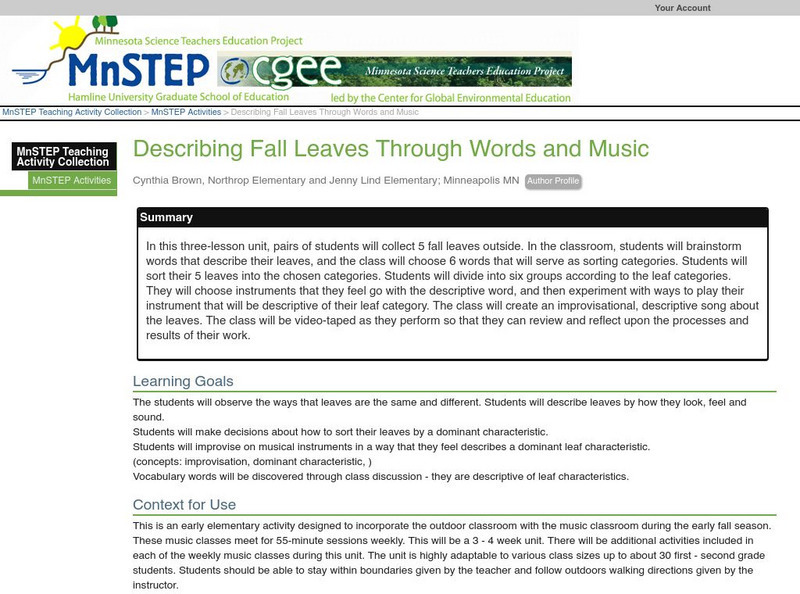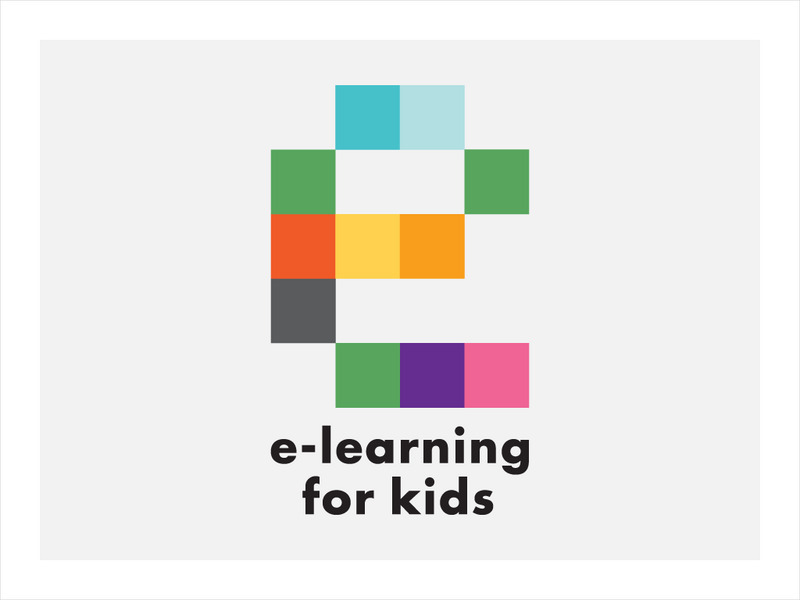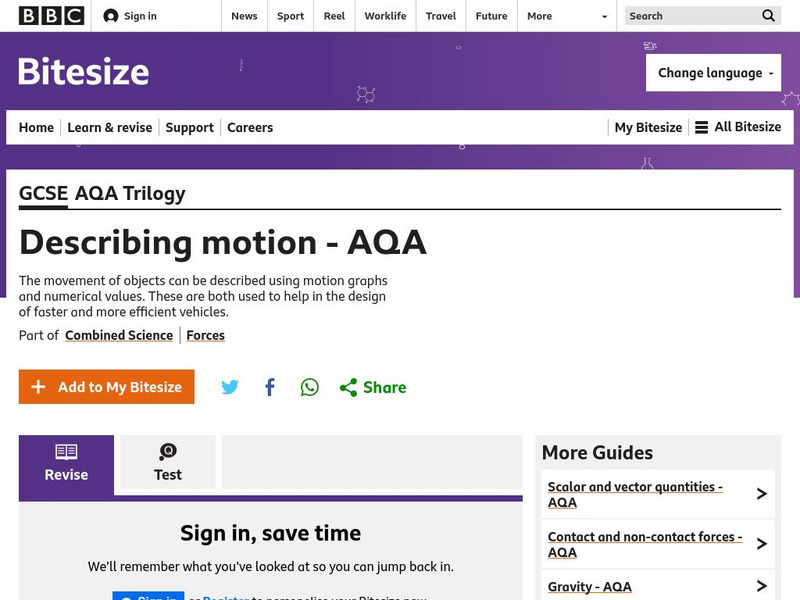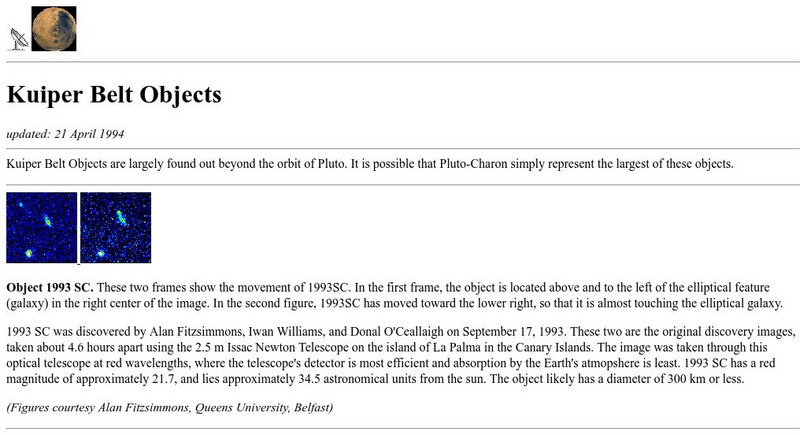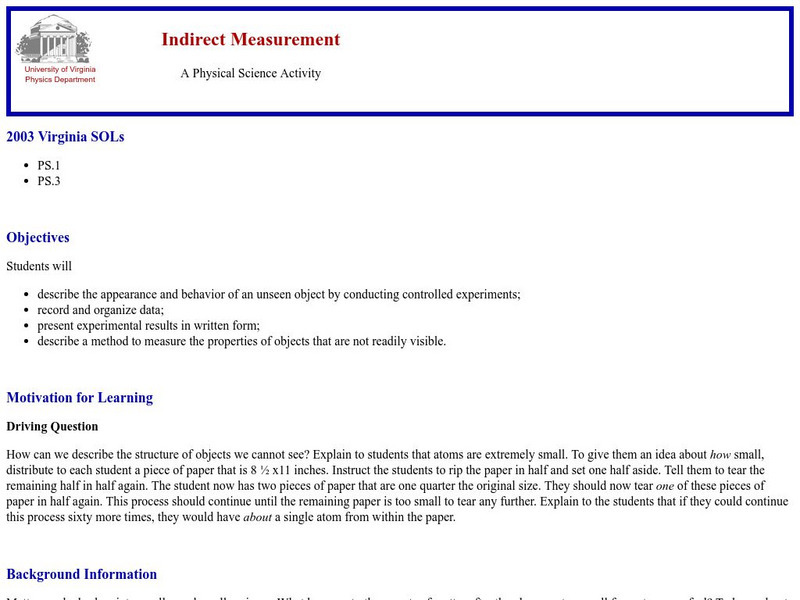Texas Education Agency
Texas Gateway: Kinematics: Falling Objects
By the end of this section, you will be able to describe the effects of gravity on objects in motion, describe the motion of objects that are in free fall, and calculate the position and velocity of objects in free fall.
OpenStax
Open Stax: Falling Objects
In the following interactive module, students will describe the effects of gravity on objects in motion. They will also describe the motion of objects that are in freefall and calculate the position and velocity of objects in freefall.
Texas Education Agency
Texas Gateway: Motion of an Object in a Viscous Fluid
By the end of this section, you will be able to calculate the Reynolds number for an object moving through a fluid, explain whether the Reynolds number indicates laminar or turbulent flow, and describe the conditions under which an...
E-learning for Kids
E Learning for Kids: Science: Bikini Atoll: Senses: Observation of Familiar Materials and Objects
Students use their senses to identify and describe objects.
University of Texas at Austin
Tex's French Grammar: Indirect Object Pronouns
This site from Tex's French Grammar is a wonderful site with clear explanation of indirect object pronouns (me, te, lui, nous, vous, leur), with written and audio usage examples and interactive practice exercises. Describes forms and...
Google
Google for Education: Describing an Everyday Object
In this activity, young scholars act like inventors of an object that does not yet exist, and they try to describe what need would be fulfilled by this object, and how specifically it functions.
CK-12 Foundation
Ck 12: Charging Objects
[Free Registration/Login may be required to access all resource tools.] The laws that govern interactions between charged particles are explained, and methods of creating a net charge on an object are described.
TED Talks
Ted: Ted Ed: The Invisible Motion of Still Objects
Ran Tivony describes how and why molecular movement occurs and investigates if it might ever stop. [4:44]
Other
Kindergarten Works: 10 Activities for Describing 3 D Shapes in Kindergarten
Describing 3D shapes in Pre-K and Kindergarten is now an expectation as it is a key geometry standard. This resource contains 3D shapes activities and resources for practicing this standard. Included are chants, videos, games, poetry,...
Other
Sorico: Describing and Comparing Measurable Attributes
The following unit can be used to teach measurable attributes. Students will describe and compare two objects with a measurable concept in common using direct comparison. Included are necessary vocabulary, a scavenger hunt, and links to...
University of Texas at Austin
Tex's French Grammar: Direct Object Pronouns
This site from Tex's French Grammar is a wonderful site with clear explanation of direct object pronouns (me, te, le, la, nous, vous, les, m', t', l'), with written and audio usage examples and interactive practice exercises. Describes...
Science Education Resource Center at Carleton College
Serc: Describing Fall Leaves Through Words and Music
Students collect, describe, and sort leaves found outside. As a cross-curricular component, they will improvise on musical instruments in a way that they feel describes a dominant leaf characteristic.
Physics Classroom
The Physics Classroom: 1 D Kinematics: Describing Motion Distance & Displa [Pdf]
A collection of high-school level physics problems with an emphasis on kinematics where learners practice describing an object's motion.
E-learning for Kids
E Learning for Kids: Math: Living in the Mill: 3 D Objects
On this interactive website students practice various math skills using a real life scenario at a toy store. Those skills include describing the features of pyramids, prisms, cones, cylinders and spheres.
BBC
Bbc: Gcse Bitesize: Describing Motion Aqa
This lesson focuses on Distance-time graphs; the gradient of a distance-time graph represents the speed of an object.
Arizona State University
Mars Global Surveyor: Kuiper Belt Objects
This site describes the extended belt of small bodies residing just outside the orbit of Pluto, the Kuiper Belt.
Illustrative Mathematics
Illustrative Mathematics: Longer and Heavier? Shorter and Heavier?
Students will compare the length and weight of several pairs of objects to learn that weight and length are separate measurable attributes, and not always related.
CK-12 Foundation
Ck 12: Elem Math: Classifying Real Life Objects as Basic 2 D Shapes
[Free Registration/Login may be required to access all resource tools.] The video describes how to classify a real-world object as a circle, triangle, square or rectangle. The video is followed by additional practice problems.
TeachEngineering
Teach Engineering: Don't Confuse Your Qs!
Students investigate the difference between qualitative and quantitative measurements and observations. By describing objects both qualitatively and quantitatively, they learn that both types of information are required for complete...
University of Pittsburgh
Digital Research Library: Visuals for Foreign Language Instruction
This site contains hundreds of illustrations that can be used to support instructional tasks such as describing objects and people (i.e., teaching vocabulary) or describing entire events and situations (i.e., teaching grammar).
University of Virginia
University of Virginia: Indirect Measurement
This site contains an exercise that teaches about indirect measurements, used in this case to describe objects we cannot see.
Texas Education Agency
Texas Gateway: Collisions of Point Masses in Two Dimensions
By the end of this section, you will be able to discuss two-dimensional collisions as an extension of one-dimensional analysis, define point masses, derive an expression for conservation of momentum along the x-axis and y-axis, describe...
NASA
Nasa: What Is a Planet?
This lesson teaches students about the characteristics of planets, comets, asteroids, and trans-Neptunian objects. After learning about these different things, students then are to debate about a new object that is found in space.
Other
Calvin College: Inheritance and Oop
A presentation in PowerPoint format that describes the object oriented programming concept of inheritance. Examples use the Java programming language.





